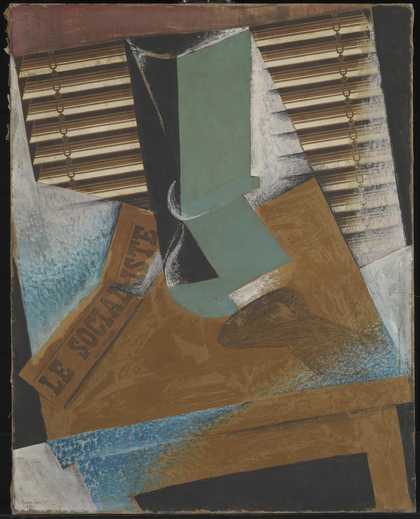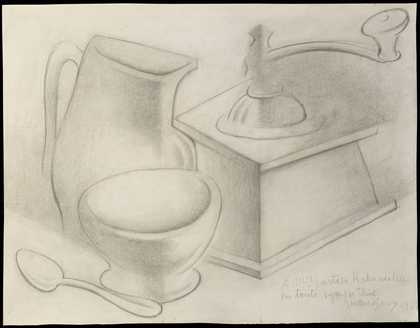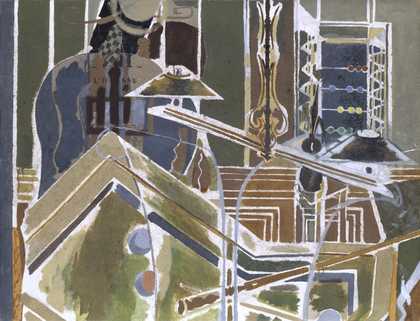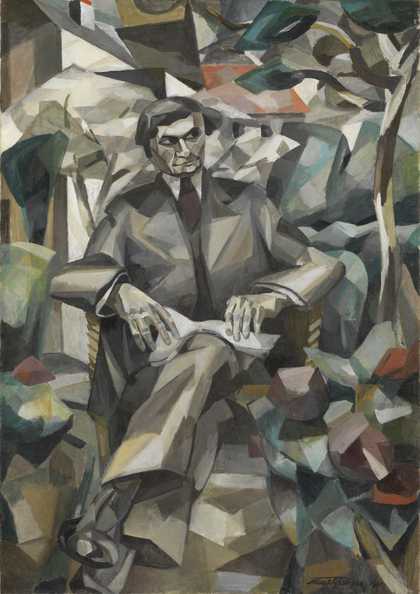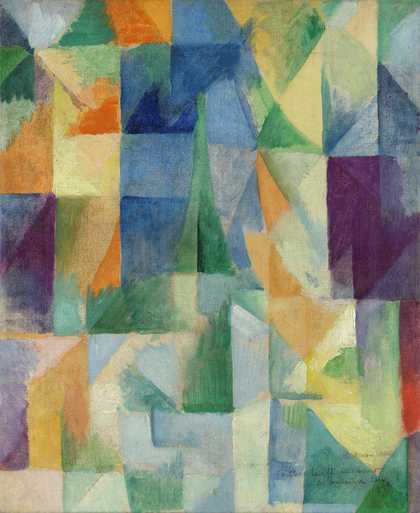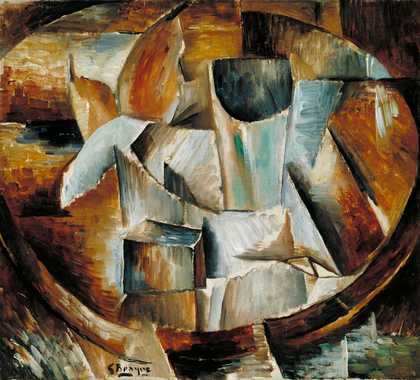
Georges Braque
Glass on a Table (1909–10)
Tate
In an attempt to classify the revolutionary experiments made by Pablo Picasso, Georges Braque and Juan Gris when they were exponents of cubism, historians have tended to divide cubism into two stages. The early phase, generally considered to run from 1908–12 is called analytical cubism and the second is called synthetic cubism.
It is termed analytical cubism because of its structured dissection of the subject, viewpoint-by-viewpoint, resulting in a fragmentary image of multiple viewpoints and overlapping planes. Other distinguishing features of analytical cubism were a simplified palette of colours, so the viewer was not distracted from the structure of the form, and the density of the image at the centre of the canvas.

